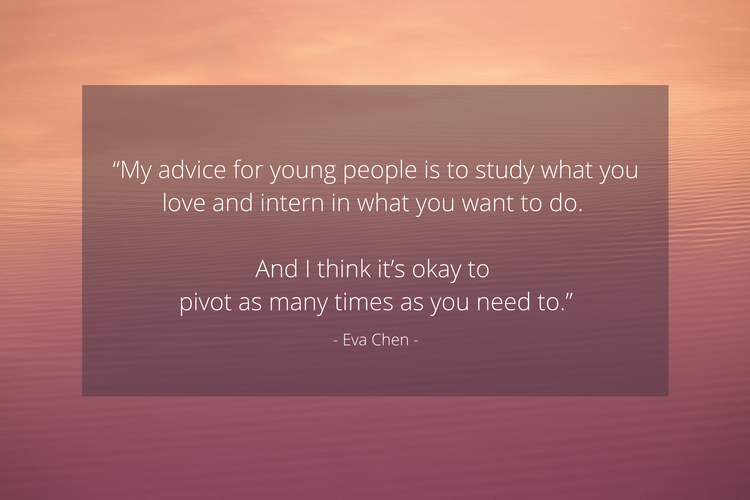I have always shied away from jobs that I knew could not offer me the training and experiences relevant to my degree — marketing.
As a college senior, I’ve found that it is extremely difficult to find a part-time position that offers this added-value to my educational experience. But when I found out my university is partnered with several businesses within the community, I found Presence.
Within the past decade, there’s been a lot of discussion regarding the workforce readiness of college graduates. Specifically, graduates feel that they are prepared for the workforce, but employers disagree.
According to the 2016 Workforce-Skills Preparedness Report from PayScale, while nearly 90% of recent college graduates feel they are workforce ready, only half of their hiring managers agreed with them. Yikes.
The NACE Survey found that these are the skills that employers are looking for in their recently-graduated new hire:
- Leadership
- Ability to work in a team
- Communication skills (written)
- Problem-solving skills
- Communication skills (verbal)
- Strong work ethic
- Initiative
- Analytical/quantitative skills
- Flexibility/adaptability
- Technical skills

One way to build up these skills is through experiential learning opportunities, including internships. Internships allow students to improve their changes of post-graduation success and build a higher level of confidence when entering the workforce.
Throughout the course of my internship, I have refined all 10 of those listed skills through meaningful projects and tasks.
For example, I have significantly improved my written communication skills through blog writing and content creation. Additionally, my internship has assisted me in terms of personal and professional development by creating micro-projects on institutional research and analytics, facilitating an open and collaborative work environment, ensuring creative freedom in order to initiate and implement my own ideas.
To be blunt: Employers are looking for graduates with skills and experiences developed outside of the classroom.
Internship programs add value to the student experience. In turn, students who successfully complete internships increase their chances of being a desirable candidate for future employers.

Internship programs also help identify market trends and employer needs, positively impacting program success and learning outcomes.
In Florida, public institutions are funded according to 10 different metrics, which includes the median wage of baccalaureate graduates who are employed full-time. In the current job climate, it has become increasingly more difficult for students to obtain full-time positions post-graduation due to a few reasons, including workforce readiness.
According to Generation Opportunity, in 2016 the millennial unemployment rate was 12.8 percent, compared to the national average of 4.1 percent.
By rethinking your program structure and incorporating internships into the required curriculum, you’ll prepare your students for the workforce, enhance the student experience, and start shifting the national conversation in a positive way.

If you feel like you could do more with your internship programs on campus, these four ideas could help:
1. Build community partnerships
Universities often partner with businesses within the surrounding area, which establishes relationships and helps tailor institutional programming. By creating these partnerships you are giving students the opportunity to further network within the community in which they are receiving their education. Additionally, you’re making relevant work experiences that are sought after by employers more accessible.
You begin to establish these relationships by hosting specific events like internship fairs or interview days. Offer local businesses access to university job and internship posting board — those organizations might want to hire your students as interns, but not know how to reach you. Do some proactive outreach to connect your students with opportunities for their growth.
By doing these things you are mitigating time spent searching for specific partnerships by facilitating an open platform for employers to seek out your students and you’re making the internship search process less overwhelming for students.
2. Allocate stipends for unpaid internships
Something that is less common is universities offering need-based grants or stipends to students who are participating in unpaid internships.
There are several benefits to implementing a funding program for unpaid internships. By utilizing grants or internships you are allowing students to enrich their education through meaningful work experiences, acquire skills for their professional development, and learn what it is like to work in a non-profit environment.
Most importantly, these grants and scholarships could grant access to meaningful opportunities for students who would otherwise not be able to pursue them without this financial support. If stipends aren’t an option, consider what types of financial support your institution could offer. If the internship is local and taking place over the summer, could your institution offer significantly discounted housing? Could they opt to receive course credit? Which brings me to my next point:
3. Intern for course credit
A very common form of encouraging internships on campus is through an internship for credit courses — in fact, I am currently enrolled in an internship for credit program at my university.
Providing the option to receive credit for working in an internship is extremely enticing to students. Most students are aware of the value in an internship, and if their university is giving them a course worth of credits to take advantage of an internship opportunity, they will.
Some of the immediate benefits here for the university is that:
- Your students are leaving your institution with a grasp on workforce readiness. And as I mentioned before, that could mean more funded being awarded to the university by the state.
- Improving the overall community relationships of your institution.
- Providing students with more meaningful and positive experiences.
- A faculty or staff member may serve as the internship “sponsor” allowing the institution to confirm both the quality and amount of work performed during the internship.
4. Internship within the classroom
A unique possibility would be creating a blended internship course. Within the course structure, students would spend part of their time in the classroom learning about specific “essential skills” and why they are important and applicable to the workplace. Following their conceptual understanding of these skills, they would spend the second half of the course applying the skills discussed.
More specifically, students could be assigned to particular workstations across campus and apply their learned skills through experiences and activities required while on the job. For example, if one student is assigned to the marketing department, that student may be assigned tasks that would enhance their communication skills through writing tasks, or improve their technical skills by designing purposeful spreadsheets and documents.

With these options, encouraging students to participate in internships is simple.
How does your campus utilize internship programs? Let us know on Twitter @themoderncampus!





